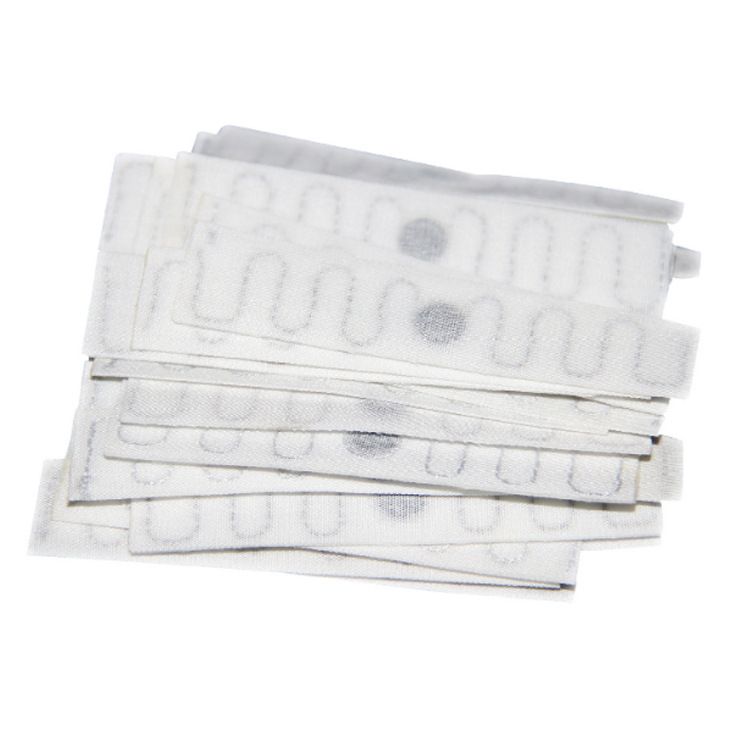
What Types Of RFID Tags Are Used In The Clothing Industry?
Traditional laundry businesses often rely on manual counting methods to identify lost or stolen textiles.
This article dives deep into the world of Radio Frequency Identification (RFID) inlays, the hidden heroes behind modern tracking and identification systems. You might not see them, but they’re everywhere, impacting everything from your shopping habits to how efficiently goods are moved around the globe. We’ll uncover how these little devices work, why they’re so important, and how they’re changing industries like retail, healthcare, and logistics. If you’re curious about the technology that’s making our world smarter and more connected, this article is your must-read guide! It’s worth reading because you will understand the basic principles of RFID technology, discover the various applications of RFID inlays, and see the future trends that will shape how we interact with everyday objects.
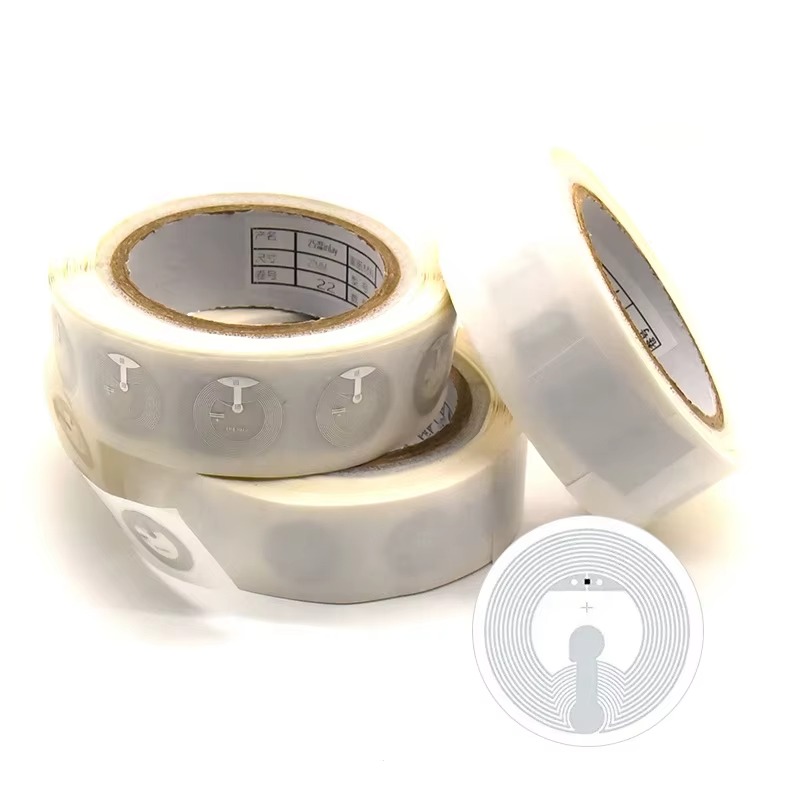
Imagine you have a sticker, but this isn’t your ordinary sticker. Hidden inside is a tiny computer chip and a small, coiled antenna. This is the essence of an RFID inlay. Think of it as the brains and the voice of an RFID tag. In simpler terms, an RFID inlay is the functional part of an RFID tag that enables it to store and transmit data. Without the inlay, an RFID tag is just a piece of paper or plastic.

Now, how does it work? The chip inside the inlay holds information – like a product’s serial number, origin, or even its destination. The antenna is the communicator, the part that allows the chip to talk to an RFID reader. The antenna in the inlay receives signals and power from the reader, which energizes the chip. The chip then sends back the stored information to the reader. It’s like a secret handshake between the tag and the reader, but instead of a handshake, it’s radio waves doing the talking. This all happens in a fraction of a second. These inlays are usually sandwiched between layers of material, forming what we see as a tag or a label.
In the world of RFID, there are two main types: passive and active. Most inlays are passive, meaning they don’t have a battery. They get their power from the reader’s signal. Active tags, on the other hand, have their own power source and can transmit signals over longer distances. The type of RFID inlay used will depend on the specific need, or use case. Some common uses will be described later in this article, like tracking items or products in a store.
Okay, let’s talk about “wet” and “dry” inlays. It sounds a bit like we’re doing laundry, but it’s all about how these inlays are made. A dry inlay is basically the chip and the antenna mounted on a thin, flexible material called a substrate, like a very thin sheet of plastic. There’s no adhesive on it yet. It’s like the inlay is “dry” because it’s not ready to stick to anything.
A wet inlay, on the other hand, is like a dry inlay that’s ready to be used. It has a sticky backing, an adhesive layer, added to it, and also a paper backing so that the adhesive does not stick to unwanted items, and then the user can just peel it off and stick it onto something, just like a regular sticker. This makes wet inlay tags super easy to use in various applications. For example, a retailer might use wet inlays to quickly label products for inventory management.
The manufacture of RFID inlays is a fascinating process, combining precision engineering with mass production. Let me simplify the key steps:
Chip Creation: It all starts with the silicon chip, the “brain” of the inlay. These chips are designed to store data and are produced in specialized facilities. Each chip contains a unique identifier and can store additional information, like product details. Companies like NXP are major players in this field.
Antenna Design: The antenna is what allows the chip to communicate. Antennas are often made from aluminum, copper, or silver and are designed to work at specific frequency ranges, such as UHF (Ultra High Frequency) or HF (High Frequency). The inlay design is crucial for optimal performance. For instance, some are specifically made for operation in the UHF band, which is great for tracking items over longer distances.
Bonding: The chip and the antenna need to be connected. This is usually done using a flip-chip process, where the chip is flipped over and bonded directly to the antenna.
Substrate Attachment: The combined chip and antenna are then mounted onto a flexible substrate material. This creates the basic RFID inlay. This substrate is often made of PET (polyethylene terephthalate) or paper.
Testing: Every inlay undergoes rigorous testing to ensure it meets quality standards. This might involve checking the read range or verifying the data stored on the chip.
Conversion: Depending on the final application, the inlay may be converted into a wet inlay by adding an adhesive layer. This is usually done in large rolls, which can then be cut into individual RFID labels.
Many companies have their own in-house production, while others may outsource to specialized manufacturers. Many brands produce RFID tags and labels, but one of the largest players in this market is Avery Dennison. Some firms, like the American-owned and operated engineering firm mentioned earlier, focus on creating custom RFID products, including designs for operation in specific environments.
RFID inlays are incredibly versatile. They are the backbone of RFID systems in many different industries. Here are some common places you’ll find them:
Retail: This is probably the most visible application. RFID tags are used for inventory management, helping stores keep track of their stock in real-time. Think about walking into a clothing store, and the staff can instantly find out if they have your size in the back – that’s RFID at work. Item-level retail tagging is becoming increasingly popular, with each item having its own unique ID. This allows for better stock visibility and can even help prevent theft. Retailers have embraced this technology.
Logistics and Supply Chain: RFID is a game-changer for tracking goods as they move around the world. RFID tags on shipping containers and pallets make tracking items more efficient and accurate. This reduces errors and delays. Companies use RFID to monitor their supply chains, from the factory to the store shelf. This helps to know exactly where items are located, and it allows better planning and reduces losses due to lost or misplaced goods. The transport and logistics industry heavily relies on this technology.
Healthcare: RFID is used to track medical equipment, manage pharmaceuticals, and even monitor patients. It helps ensure that the right medication gets to the right patient at the right time. For example, hospitals might use RFID to keep track of expensive equipment like MRI machines or to manage their inventory of pharmaceuticals and healthcare supplies.
Aviation: RFID is making air travel smoother. Some airlines use RFID-enabled baggage tags to track luggage, reducing the chances of lost bags. It also helps speed up the baggage handling process, getting you to your destination faster.
Beauty and Personal Care or Cosmetic products can also be tagged with RFID, mostly as a security feature against theft.
These are just a few examples. The possibilities of RFID tag and inlay are endless.
In the RFID world, “HF” and “UHF” are two important terms. They stand for High Frequency and Ultra High Frequency, respectively, and they refer to the frequency bands in which the RFID system operates. They are measured in MHz.
HF RFID Inlays: These operate at 13.56 MHz. They have a shorter read range, typically a few centimeters to about a meter. Think of them as being good for close-range interactions. One well-known example of HF technology is NFC (Near Field Communication), which is used in contactless payments with your phone or credit card. HF inlays are often used for access control, ticketing, and library book tracking.
UHF RFID Inlays: These operate in the range of 860-960 MHz. They have a much longer read range, up to several meters. This makes them ideal for tracking items in a warehouse or across a supply chain. UHF inlays are commonly used in retail for inventory management, in logistics for tracking shipments, and in asset tracking applications.
Here’s a simple table to summarize the key differences:
Feature | HF RFID Inlay | UHF RFID Inlay |
Frequency | 13.56 MHz | 860-960 MHz |
Read Range | Short (centimeters to about a meter) | Long (up to several meters) |
Applications | Access control, ticketing, NFC payments | Inventory management, logistics, asset tracking |
Data Rate | Lower | Higher |
Cost | Generally Lower | Generally Higher |
The choice between HF and UHF depends on the specific application. A library might use HF for tracking books, while a large retailer might use UHF for managing inventory in their warehouse.
Yes, you absolutely can! While there are many standard RFID inlays available in stock, sometimes you need something tailored to your specific needs. This is where custom RFID inlays come in. But how do you go about creating one?
First, you need to define your requirements. What frequency do you need? What read range are you aiming for? What kind of environment will the inlay be used in? What size and shape do you need? What data needs to be stored on the chip?
Once you have a clear understanding of your needs, you can start working with a company that manufactures custom RFID products. This could be an engineering firm that manufactures custom solutions or a specialized RFID provider. They will guide you through the design process.
Here are the typical steps involved in designing a custom RFID inlay:
Consultation: Discuss your requirements with the manufacturer.
Antenna Design: The antenna will be designed to meet your specific frequency and read range needs.
Chip Selection: The appropriate chip will be chosen based on your data storage and processing needs.
Substrate Selection: The substrate material will be selected based on the environment in which the inlay will be used.
Prototyping: A prototype inlay will be created and tested to ensure it meets your requirements.
Production: Once the prototype is approved, the inlay will be produced in the desired quantity.
Creating a custom RFID inlay might seem daunting, but it can be a rewarding process. It allows you to have an RFID solution that is perfectly tailored to your needs.
Choosing the right RFID inlay can be tricky. There are many options available, and the best choice depends on your specific needs. Here are some key factors to consider:
Frequency: As we discussed earlier, HF and UHF are the two main frequency bands. Choose the one that best suits your read range and application requirements.
Read Range: How far away does the reader need to be to read the tag? This will determine the type of inlay and antenna you need.
Memory: How much data do you need to store on the chip? Different chips have different memory capacities. The MIFARE S50 RFID Inlay has 1K Byte memory.
Environment: Where will the inlay be used? Will it be exposed to harsh conditions like extreme temperatures, moisture, or chemicals? You’ll need an inlay that can withstand those conditions. Wet inlay tags are more resistant to damage than dry inlays.
Form Factor: What size and shape do you need? RFID inlays come in a wide range of inlay sizes and shapes, from small circular tags to large rectangular labels. They can come in delivery formats of rolls or individual pieces. For example, the MIFARE S50 RFID Inlay comes in sizes like 40x25mm, 18x56mm, Dia22mm, and Dia25mm, and comes in a blank coin tag sticker format.
Cost: RFID inlays vary in price depending on their features and capabilities. Consider your budget and choose an inlay that offers the best value for your needs.
Standards Compliance: Make sure the inlay complies with relevant industry standards such as ISO. The MIFARE S50 RFID Inlay is compliant with the ISO/IEC 14443A protocol.
“Choosing the right RFID inlay is like choosing the right tool for a job,” says one engineer. “You wouldn’t use a hammer to tighten a screw, and you wouldn’t use a short-range HF inlay to track items across a warehouse.”
RFID technology is constantly evolving. Here are some exciting trends that are shaping the future of RFID inlays:
Smaller and More Powerful Chips: Chip technology is advancing rapidly, leading to smaller, more powerful chips with increased memory and processing capabilities. This means RFID inlays can store more data and perform more complex tasks. Companies like NXP with their UCODE chips are pushing the boundaries of what’s possible.
Improved Antenna Designs: New antenna designs are being developed to improve read range and reliability. Researchers are exploring new materials and shapes to create antennas that are more efficient and less susceptible to interference.
Biodegradable Inlays: There’s a growing focus on sustainability. Researchers are working on developing biodegradable RFID inlays that are more environmentally friendly.
Integration with Other Technologies: RFID is being integrated with other technologies, such as sensors and GPS, to create even more powerful tracking and monitoring solutions.
Enhanced Security: Security is a major concern in many RFID applications. New security features are being developed to protect data stored on RFID chips and prevent unauthorized access.
“The future of RFID is bright,” says a leading industry expert. “We’re going to see even more innovative applications of RFID technology in the years to come.”
We’ve touched on some specific applications earlier, but let’s take a broader look at how RFID is transforming entire industries:
Retail: RFID is revolutionizing retail, enabling real-time inventory visibility, reducing out-of-stocks, and improving the customer experience. It’s also helping to combat counterfeiting and improve product traceability.
Logistics and Supply Chain: RFID is making supply chains more efficient and transparent, allowing companies to track goods in real-time, optimize routes, and reduce delays.
Healthcare: RFID is improving patient safety, streamlining hospital operations, and ensuring the authenticity of pharmaceuticals.
Manufacturing: RFID is being used to track work-in-progress, manage assets, and improve production efficiency.
Automotive industry: RFID can be used to track parts during the manufacturing process to ensure the correct components are used and to streamline assembly operations.
These are just a few examples. As RFID technology continues to evolve and become more affordable, we can expect to see even wider adoption across various sectors.
RFID inlays are the essential components of RFID tags, providing the ability to store and transmit data.
They consist of a chip and an antenna, typically mounted on a flexible substrate.
Wet inlays have an adhesive backing, making them easy to apply as labels.
HF and UHF are the two main frequency bands, each with its own advantages and disadvantages.
Custom RFID inlays can be designed to meet specific requirements.
RFID technology is transforming various industries, including retail, logistics, and healthcare.
The future of RFID looks promising, with advancements in chip technology, antenna designs, and new applications on the horizon.
The extensive RFID technology portfolio covers a wide range of applications and industries and is continually evolving.
This comprehensive guide should give you a solid understanding of RFID inlays and their significance in today’s world. If you have any further questions, feel free to contact us today! Remember, the world of RFID is constantly evolving, so stay tuned for more exciting developments!
Newest trends and common knowledge in RFID laundry tags.

Traditional laundry businesses often rely on manual counting methods to identify lost or stolen textiles.
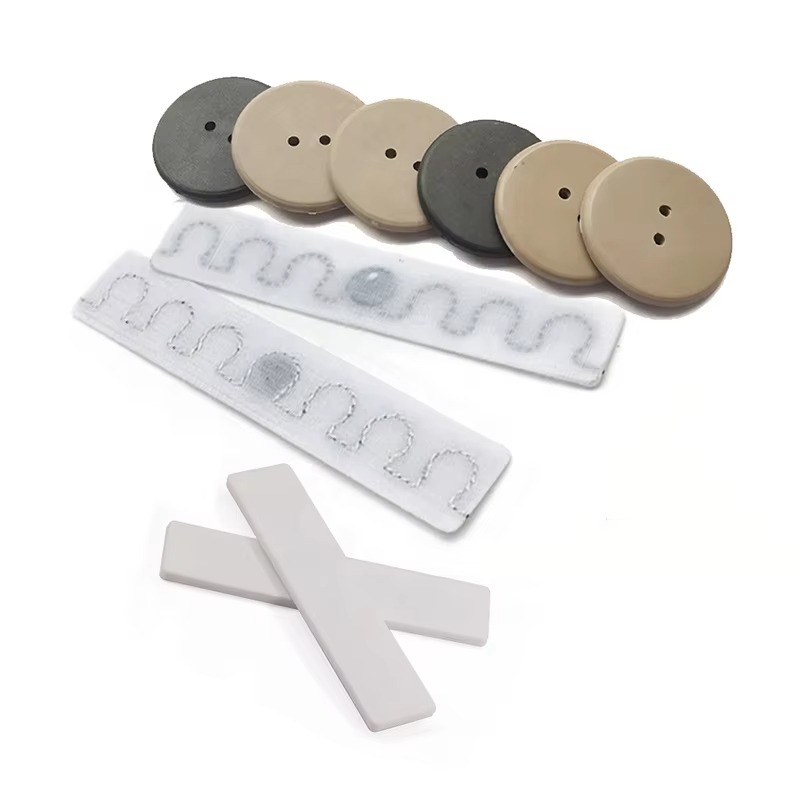
RFID tags streamline laundry management by tracking items through washing cycles. Waterproof and soft, they ensure efficient inventory control and reduce losses.
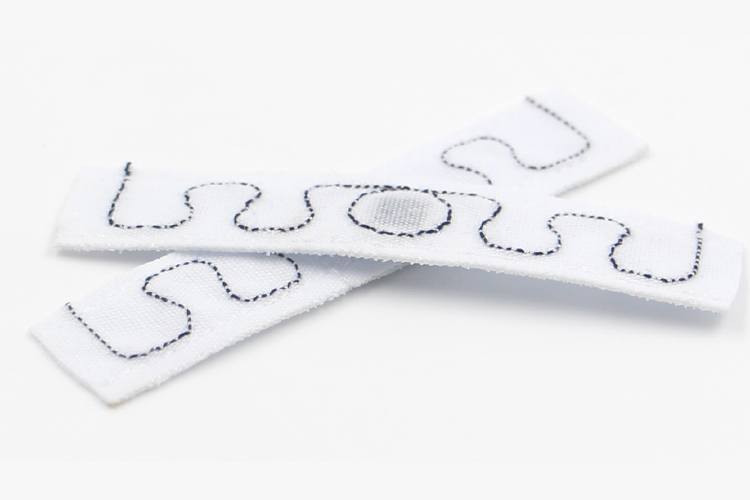
RFID laundry tags are designed specifically for industries where hygiene and inventory control are crucial.
As one of the top RFID Tag manufacturers in China, we specialize in high-quality RFID Tag and other RFID products designed to meet the diverse needs of various industries.
@ 2024 RFID Laundry Tag. All right reserved.
Didn’t find what you want? Ask our manager for help!